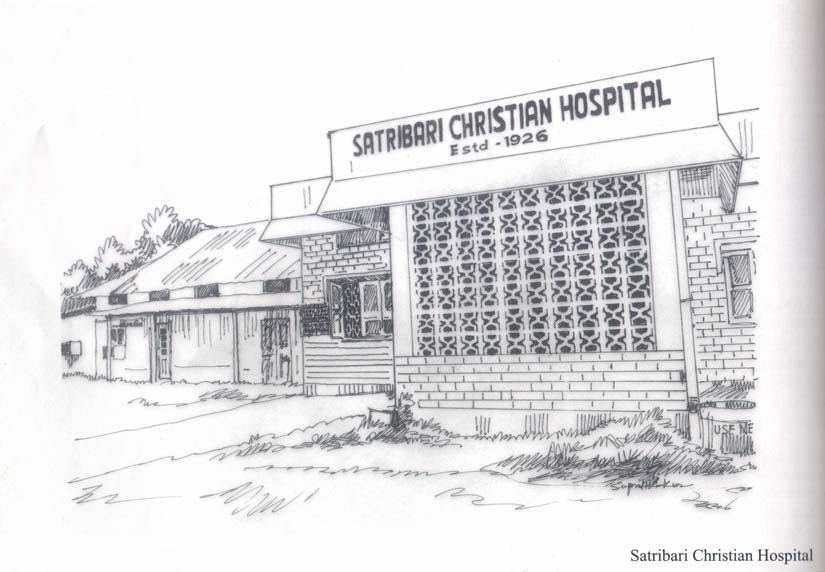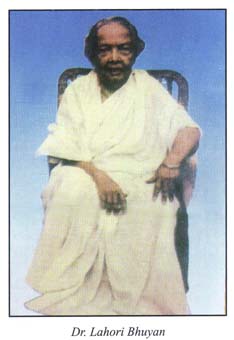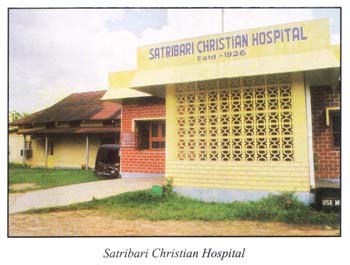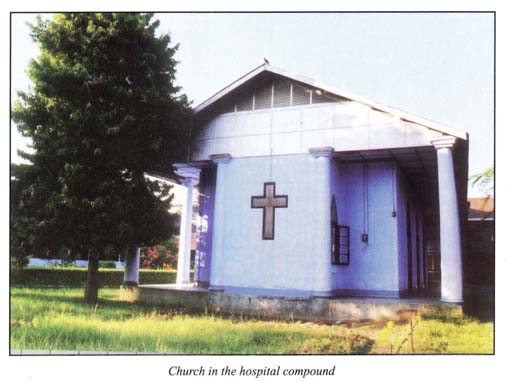| SERVING TO HEAL |
 |
In early 1926 a hospital for women was opened in town. What was unique about it was that until a year following its establishment it had no doctor, although records unveiled on its first anniversary showed that the hospital had treated 4,484 women, including 25 indoor patients. It is no wonder then that the Satribari Christian Hospital has always been regarded one of a kind, a hospital that has over the decades proved a beacon of hope for the region’s people.
|
As early as in 1915, the Women’s Council of the Assam Baptist Convention adopted a resolution to establish an exclusive hospital for women at Guwahati. The Council, consisting of women who came to Assam on missionary work from different parts of the United States of America, particularly from the Kansas, Nebraska and lowa regions, forwarded the proposal to the American Baptist Mission. The Mission accepted it on principal, but kept a final decision pending since the issue of site for the hospice and lack of qualified doctors appeared a major obstacle. The Council however justified its proposal by pointing out that a survey conducted in some villages had shown that “in lower Assam women lived in a more conservative society where the men did not permit them to be examined by male doctors. Women, particularly young mothers, hence suffered from sever malnutrition and post-natal care.” The American Baptist Mission now had to consider “the forceful arguments” forwarded by the Women’s Council and in 1920 it finally resolved to start the hospital in Guwahati.
|
|
Construction started in 1923 and by 1925 the 25-bed hospital was even ready. But no lady doctor had been found in the meantime to provide treatment. At this juncture Millie Marvin, a dedicated missionary nurse, a few months later. And it is this team of six nurses who tended to the patients until about more than a year later when Dr Lahori Bhuyan joined as first lady doctor.
In 1927, as the inflow of patients increased, the service of Dr Martha J Gifford of the Burma American Baptist Mission was also requisitioned. In the early years, however, retaining staff at the hospital was quite a problem because of several reasons. It was only in the 1930s that the situation stabilized.
|
|
Since then a number of physicians of repute have headed the institute, including luminaries like Dr G Allens, Dr Webster, Dr Merchant, Dr L Norton and Dr F Curry. Several other doctors and nurses also rendered great service to ill and suffering, thus making the hospital one of the best in the region. Within ten years of its establishment in 1936, the government certified the Satribari Christian Hospital an “outstanding institution”. A report of 1936 states: “The reception accorded to this hospital among the Assamese is phenomenal. Both Europeans and Indians who have availed themselves of its service speak of it in the highest terms.” |
The hospital holds the unique distinction of having started nursing training programs since its very inception. The first nurse graduated from here in 1930. And since the 1940s, the hospital’s Nurses’ Training Centre has been affiliated to the Nursing Association of India.
During World War II, the Satribari Christian Hospital had a testing time. Since medical facilities were inadequate in the region, the hospital was requisitioned by the government and made into a second referral hospital, after the Civil Hospital. In 1944, when war reached the Kohima and Manipur fronts and inflow of patients increased, the Red Cross emergency unit was pressed into the service of the hospital. And in the process, the women’s hospital was converted into a general hospital.
|
Today the Satribari Hospital has nearly 200 beds served by a staff of more than a hundred. Its activities have increased manifold. A community health project center for mother and childcare has been added to a setup that also includes a rural center at Borbituli near Sonapur. Maya Banerjee, a senior citizen of Guwahati who was nursed back to health following a serious illness in the 1950s can vividly recall what Dr Murdhenk had told her after her recovery: “It is not us but God who saved your life. We have come to serve in this hospital. It is our mission .” And this zeal is still alive in the Satribari Christian Hospital. |
|


